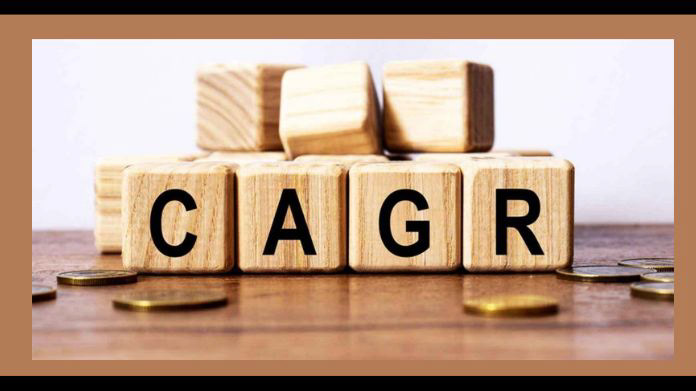How to Calculate Future Value With a Financial Calculator

Have you ever wondered about the future value of your investments and wished for a simple yet effective way to calculate it? The answer lies in the realm of financial calculators, powerful tools that can demystify the complexities of financial planning.
In the dynamic world of finance, understanding how to calculate the future value of an investment is a fundamental skill for investors, financial analysts, and anyone seeking to make informed financial decisions.
In the dynamic world of finance, understanding how to calculate the future value of an investment is a fundamental skill for investors, financial analysts, and anyone seeking to make informed financial decisions.
One powerful tool that aids in this process is the financial calculator. CAGR is a helpful technique to CAGR calculate both past and future investment growth rates effectively; So, you can use CAGR Calculator as well as future value calculator.
In this article, we will delve into the intricacies of calculating future value using a financial calculator, providing you with a step-by-step guide and insights into mastering this essential skill.
Let's delve into the practical and user-friendly world of financial calculators, where precision meets simplicity.
What is Future Value?
Future value is the anticipated value of an investment at a future date, considering its growth or interest rate. This financial metric enables investors to evaluate the potential profitability of an investment over time.
It considers compound interest not just on the initial investment but also on interest that has been previously accumulated.
This compounding effect significantly influences the investment's growth trajectory, making future value a crucial measure in strategic financial planning.
What is the Role of Compound Annual Growth Rate (CAGR)?

The Compound Annual Growth Rate (CAGR) plays a pivotal role in future value calculations. It represents the annual growth rate at which an investment progresses to achieve its final value.
CAGR assumes a steady growth rate throughout the designated timeframe, presenting a smoothed and consistent annual rate.
CAGR = (R/ IV) 1 / n – 1
Breaking down the components:
RV=Return Value
IV=Investment Value
This formula considers the ending and beginning values of an investment and the number of years over which the growth occurs.
CAGR is expressed as a percentage, providing a clear and concise representation of the investment's compounded annual growth.
How to Calculate Future Value With CAGR?
Understanding how to calculate future value with CAGR is particularly beneficial for investors, financial analysts, and business strategists.
It provides insights into the potential growth of an investment, aiding in decision-making processes. Real-world applications include:
To calculate the future value (FV) using CAGR, investors can utilize the following formula:
FV=PV×(1+CAGR)n
Breaking down the components:
FV= Future Value
PV= Present Value or Initial Investment
CAGR= Compound Annual Growth Rate (expressed as a decimal)
n= Number of Compounding Periods
This formula is essential for projecting the future worth of an investment, assuming a consistent annual growth rate.
It forms the basis for understanding how an investment will perform over time, aiding in strategic decision-making.
Scroll down; Here are some steps to Calculate Future Value with CAGR;
To calculate the future value with CAGR, follow these steps:
Step 1: Determine Present Value (PV): Identify the initial investment or present value of the asset.
Step 2: Find CAGR: Calculate the Compound Annual Growth Rate using the formula mentioned earlier.
Step 3: Specify Compounding Periods (n): Determine the number of compounding periods, which could be in years, months, or any other unit of time.
Step 4: Apply the Formula: Substitute the values into the future value formula [FV=PV×(1+CAGR)n] and solve for the future value.
Practical Example:
Let's illustrate the application of the formula with a practical example:
Suppose you started with an investment of $5,000, and over the past four years, the investment has grown at a CAGR of 8%.
To determine the future value after four years, you would use the formula:
FV=5000×(1+0.08)4FV=5000×(1+0.08)4
Calculating this, the future value would be $6,932.48. This example demonstrates the practical application of the CAGR formula in estimating future investment values.
Potential Pitfalls and Considerations
While CAGR is a useful metric, investors should be aware of potential pitfalls:
Assumption of Constant Growth: CAGR assumes a steady growth rate, which may not always align with real-world market dynamics.
Ignoring External Factors: CAGR might not consider external variables like economic recessions, geopolitical occurrences, or challenges specific to the industry.
Shortcomings in Short-Term Analysis: CAGR might not be suitable for short-term analysis, as it tends to smooth out fluctuations over time.
FAQ's
Q: How does the CAGR formula contribute to accurate projections?
Ans: CAGR ensures precision by factoring in present value, time, and interest rates.
Q3: What are the fundamental elements to grasp for effective future value calculations?
Ans: Understanding present value, time, and interest rates forms the foundation for accurate calculations.
Q: How does this guide empower individuals in financial decision-making?
Ans: It empowers by providing a practical roadmap, fostering confidence in making informed investment decisions.
Final Words
Mastering the art of calculating future value with a financial calculator, one must grasp the essentials: present value, time, and interest rates.
Utilizing the Compound Annual Growth Rate (CAGR) formula ensures accurate projections.
This practical guide empowers individuals to navigate the complexities of finance with confidence, making informed investment decisions for a prosperous financial future.

